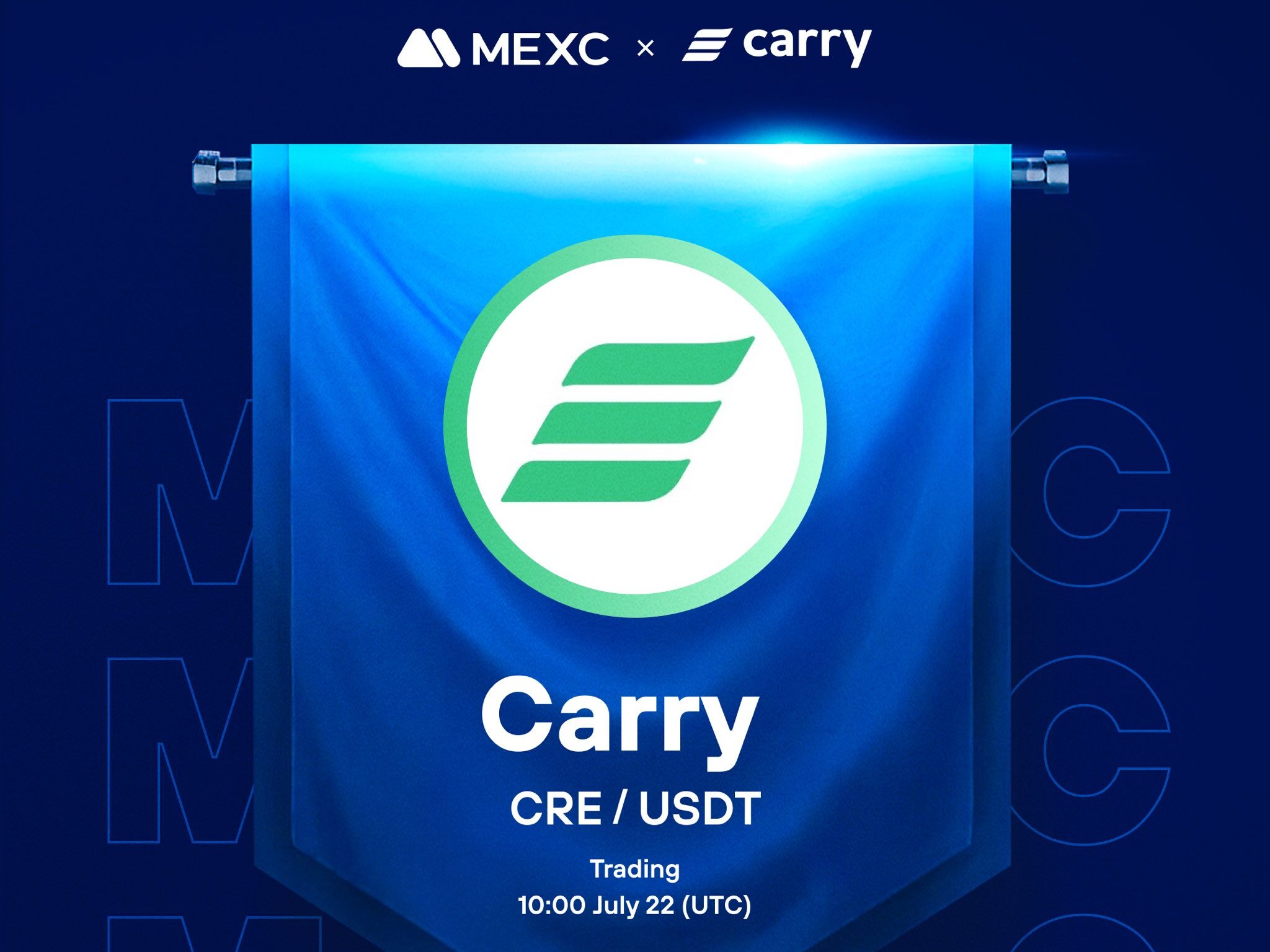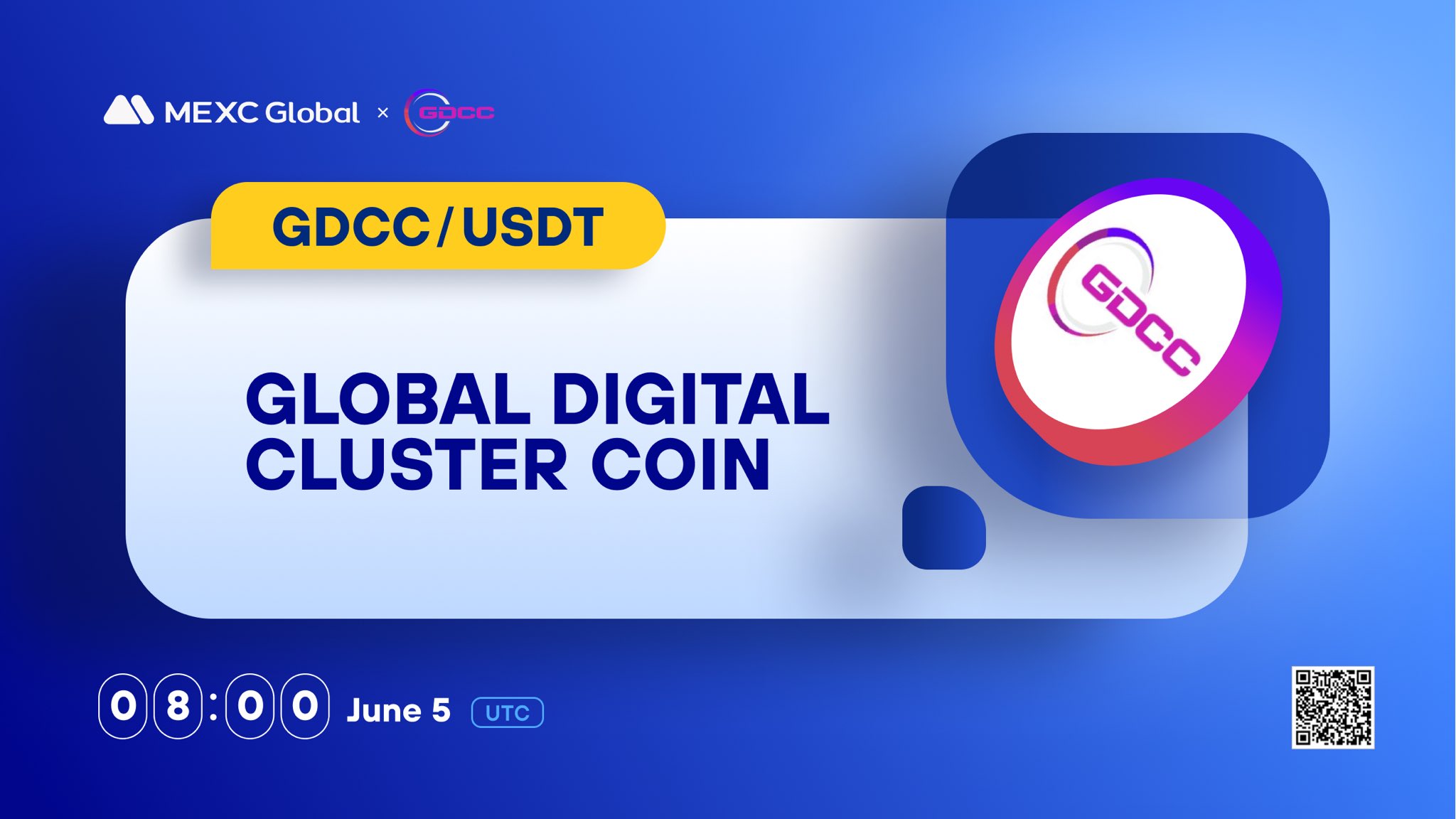Carry Protocol serves as a Web3 native advertising platform. It aims to facilitate Web3 projects in their quest to acquire a larger user base. Concurrently, Carry Protocol empowers users by offering rewards upon task completion.
Essential information for their token is available on the MEXC Digital asset introduction page. Furthermore, we are listing (CRE/USDT – Trade it here) on the Innovation Zone! Check it out now!

Carry Protocol’s Role in Advertising
Carry Protocol operates as a blockchain-based platform, forging connections between offline merchants and consumers. Despite the exponential growth of online and mobile commerce, a substantial portion of consumption still occurs offline. Surprisingly, the offline commerce market, boasting a staggering $25 trillion market size, lags behind in technological advancements due to the challenges of introducing and spreading new technologies.
Within the realm of offline commerce, three primary issues persist. Firstly, merchants face a dearth of comprehensive customer data, as it remains fragmented and incomplete. Secondly, consumers lack control over their data, which corporations exploit and capitalize on without their consent. Thirdly, offline advertising suffers from obsoleteness, characterized by a lack of transparency and efficacy.
To address these pressing challenges, Carry Protocol sets forth three core objectives. Firstly, it endeavors to provide merchants with a robust platform that facilitates a deeper understanding of their customers and fosters effective communication. Secondly, Carry Protocol empowers consumers by enabling them to take charge of their transaction data and capitalize on it. Finally, the platform seeks to introduce a novel advertising channel that stands out through its transparency and effectiveness.
Key Components in Carry Protocol
Basically, Carry Protocol is a platform that utilizes blockchain to connect merchants and consumers. These two groups are the key players in the system and utilize Carry Protocol to interact and communicate in various ways. Additionally, advertisers also participate in the Carry Protocol, with many of them being merchants within the system initially.
Carry Protocol consists of two major components, each with two parts. The first component is the blockchain itself, which encompasses the Carry transaction database and Carry smart contracts. The second component is a set of APIs that link the blockchain to third-party software, including the Carry Wallet API and Carry Device API.
- The Carry Transaction Database serves as a virtual database on the blockchain where transaction data is created and uploaded by consumers.
- Carry Smart Contract facilitates the issuance and usage of tokens (CRE and BT) on the Carry Protocol.
- Carry Wallet API empowers wallet apps to support Carry Protocol, enabling consumers to manage their cryptocurrency and have control over their transaction data and privacy settings.
- Carry Device API is an interface that allows devices at stores to support Carry Protocol, enabling consumers to make payments using cryptocurrency and sending payment data to their wallets.
How Does Carry Protocol Work?
Payment
Carry Protocol’s service commences when a consumer purchases goods or services at a store, completing a transaction. The platform facilitates various payment methods. This includes fiat payments such as credit cards and cash, as well as cryptocurrencies, ensuring user-friendly accessibility. To utilize Carry Protocol, merchants require an interactive device, like a tablet. Luckily, most of them already possess it through their POS (point-of-sale) devices. These devices can also function as Carry Protocol devices or be separate tablets.
The device sends the transaction data from the POS to the customer, who can then upload the data to the blockchain via their wallet app. Meanwhile, consumers receive the transaction data on their wallet app in multiple ways. It could be from entering their phone number on the device or scanning the QR code with the app. Importantly, consumers have full authority over their data. They have the option to choose whether to upload it wholly or partially, aligning with Carry Protocol’s mission of “consumer data ownership.” Even when consumers choose to upload data, their privacy remains safeguarded through anonymity shields and data encryption.
As an incentive for data uploads, Carry Protocol rewards consumers with CRE tokens from the Carry Token Pool. In addition to serving as a loyalty system, BT can also be utilized for advertisements. Advertisers leverage the transaction data stored on the blockchain to target ads effectively. If advertisers encounter difficulties in processing the data, they can seek assistance from an “advertising service provider” to identify suitable targets for their ads.
Advertising
Advertisements are transmitted in the form of BT on Carry Protocol. It will appear as coupons for the next visit or simple ad displays. Consumers can receive ads by configuring their settings and selecting specific areas of interest for ads. Opting to receive ads rewards consumers with CRE in addition to BT. Furthermore, they can set a minimum threshold for CRE rewards to protect against indiscriminate ads or spam. This incentive-driven approach has proven effective in various reward apps, optimizing advertising effectiveness while minimizing costs for advertisers.
Carry Protocol also offers advertisers the ability to track the efficacy of their ads, similar to online advertisements. Branded Tokens (BT) issuance and usage are traceable, enabling the measurement of ROAS (return on ad spend) and distinguishing Carry Protocol from traditional flyer distribution methods. When professional advertising businesses combine existing data with Carry Protocol data, offline market advertisements are expected to become highly effective.
While most advertisers are anticipated to be merchants on Carry Protocol, non-profit organizations, government entities, companies seeking to enhance their corporate image, and other advertisers with different objectives are also likely to participate. Media and researchers may also analyze Carry Protocol data for media coverage or academic purposes. This showcases the broad usability of Carry Protocol’s data in various domains.
Where to buy CRE Token
You can find CRE Tokens here at MEXC! We are listing CRE/USDT in our Innovation Zone!
What is the Price of CRE Tokens?
The CRE token is currently trading MEXC for $0.003757! It has a fully diluted market cap of $37,574,328. It also has a 24-hour trading volume of $7,058,298. You can check the live price of their token right here!
How to buy CRE Tokens on MEXC
You can buy CRE Tokens on MEXC by following the steps:
- Log in to your MEXC account and click [Trade]. Click on [Spot].
- Search “CRE” using the search bar to see the available trading pairs. Take CRE/USDT as an example.
- Scroll down and go to the [Spot] box. Enter the amount of CRE you want to buy. You can choose from opening a Limit order, a Market order, or a Stop-limit order. Take Market order as an example. Click [Buy CRE] to confirm your order. You will find the purchased CRE in your Spot Wallet.
You can find a detailed guide on how to buy CRE Tokens here.
Get Free Airdrops with MEXC Launchpad!
Did you know MEXC gives out 20+ free airdrops weekly? Launchpad and Kickstarter events ensure that all our loyal MX token HODLers receive a ton of new tokens! Learn all about it at our MX Zone now!
Meanwhile, check out all of the listings in the Innovation and Assessment zones as well as the major tokens in the Main Zone – we have more amazing projects to come! Visit the Hot Projects section as well to uncover more featured popular tokens. Lastly, feel free to visit MEXC Academy to learn more about cryptocurrency!
Join MEXC and Start Trading Today!



